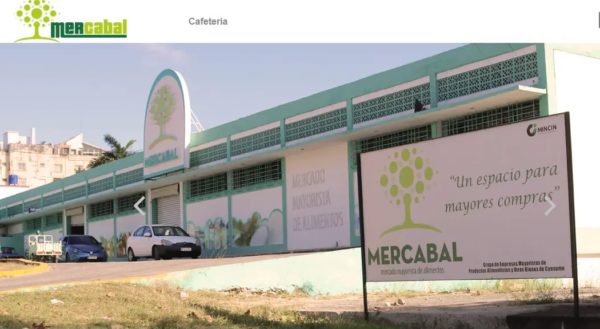Havana Reopens: Low Wages, High Prices

By Alberto C. Toppin (El Toque)
HAVANA TIMES –
HAVANA TIMES – Beers for 135 pesos, meals with pork, chicken or fish for up to 300, some more gourmet meals between 400 and 500 pesos… This was what Irene Mendoza saw on the menu at a private restaurant near Galiano, in Old Havana, just a day before it gradually reopens in the Cuban capital after months of only offering home delivery and take-away services.
“Prices here weren’t so expensive: dishes were cheaper, the pork steak cost 180 pesos,” Mendoza remembers.
On the whole, people have been taken aback by prices after services reopen, especially after the photo of a 11,000 peso bill at small restaurant on the Paseo Maritimo on 1st and 70th streets went viral on social media.
This isn’t anything new
In late 2020, the top economy official Marino Murillo, made a TV appearance and said that “the design of the Tarea Ordenamiento (economic reforms)” estimated that prices of products and services in the private sector could triple even, while the minimum wage would at least quadruple. According to government calculations, pay rises would be enough to cover the rationed food basket and other unspecified products and services.
These forecasts were taken as a reference for the exchange rate that would come into effect in January 2021: 24 Cuban pesos being the equivalent of 1 USD. However, at the beginning of the year, black market prices for the dollar were around 40 pesos. Nine months later, the dollar is now approximately 74 pesos, while the official exchange rate hasn’t wavered.
Today, the illicit market is the fastest way to obtain dollars or their equivalent in other foreign currencies, but the person loses over two-thirds of its official value in this kind of transaction. Cuban banks are not selling foreign currency. However, since September 2020, private businesses have been using them to stock up, especially from wholesale stores selling with dollar prices and via the import company ITH, which also involves dollar purchases. But the businesses are forced to keep their own prices in Cuban pesos.
Mercabal is the only wholesale company that sells to private businesses in national currency; but, according to what some interviewees have told Cubadebate, it only sells sugar and flour from time and time, and only online. The store did not have any product on sale at the time of writing this article.

“The country will reopen as it needs to, but with a lot of self-management, accessing the wholesale market in foreign currency, with relationships with productive forces, with relationships with independent producers, and of course, this self-management will push up prices and the landscape of prices will change, said Betsy Diaz, minister of Domestic Trade, just hours before Havana reopened.
Menus on the table
El Toque had access to menus from ten establishments in Havana that sell ice cream, pizza, pasta, meat and refreshments, etc. The menus were from October 2019 and September-October 2021, after the reopening.
The 2021 versions of the menus from nine of these establishments had approximately 660 less items, in total, on offer than the 2019 versions. Alcoholic beverages with imported ingredients, crepes, refreshments, desserts and pork derivates have disappeared, to name a few.
Other products have tripled or quadrupled in price at some establishments; for example, pork, extras of garlic, mushrooms, crepes, fish, national beverages, extra Nutella, imported malt drinks, mozzarella cheese and 3-year-old Havana Club shots.
Prices didn’t vary so much with the following products (they went up but didn’t manage to double): pizzas, drinks such as caipirinhas and caipiroskas, croquettes, tea, coffee, juices, milkshakes and some ice creams.
The widespread perception that prices exceed the majority’s purchasing power is not only based on bar and restaurant menus, but also on widespread shortages of products and how much it costs to get a hold of them, even with money.
“Wages have never been enough to cover living costs, but they were a lot better before. I see lots of shortages. There were shortages before, but not like this,” Jennifer Perez says. After the city reopened, she went to one of the businesses on Paseo Maritimo on 1st and 70th streets, in Miramar. Three micheladas and two starters cost the equivalent of almost a third of what she receives as a monthly stipend during her maternity leave. “People who only have their wages to live off, can’t go anywhere,” she says.
“There was never a coherent relationship between prices and the wages we Cubans received,” Hilberto Nistal says, who visited a cafe that reopened around Havana’s Cathedral. “There has been huge discordance, inflation that can be seen in the price of everything: from toothpaste to a drink at any bar.”
“Consuming at any restaurant or bar nowadays means spending a person’s entire monthly salary,” Daniela Niebla says, who recently visited Cafe Fortuna. “From my own and friends’ experiences, prices are very high compared to any Cuban’s average wage.”
Both the government and some business owners believe that the situation will change after November 15th. Jose Peon, owner of bar/restaurant El Tablazo told Cubadebate that he hopes the situation with supplies improves and that, if some costs drop, he can also lower some prices. Cuban customers aren’t so optimistic.
“I don’t believe many tourists will come when the borders reopen,” Jennifer believes. “I’m not holding onto too much hope,” Irene admits. “I don’t believe that the dollar will lower in price anytime soon, or that prices will drop overnight.”
When the first year after currency reforms and prices and wage restructuring draws near, there are signs that it will take time for wages to meet the basic needs of workers. The initial reopening of Havana is proof of this.





